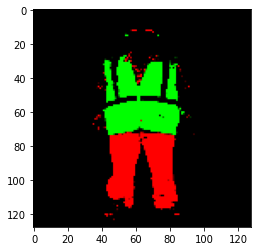A safety vest/PPE is an essential supplement for anyone taking part in any industrial activities or a construction site. A Safety Vest is necessary when working on the roadside where other people can easily identify the vest. It plays an important role in keeping the workers safe.
So, having a Safety Vest and helmet with fluorescent colors such as green, yellow, orange makes it easier to locate anyone in any lighting condition. Also, industries can monitor whether their workers are wearing a safety vest from any place. Having a vest can reduce electrocution, electric shocks and prevent fire accidents.
Many big industries and companies around the world care about their worker’s safety and ensure that everyone follows a protocol while working. But how do they track them? CCTV will help to monitor their movement but doesn’t find whether a person is wearing a PPE/ Safety Vest or not. Let’s see how we can track on a real-time basis.
Things we are going to see:
- Problem Definition
- Data Gathering
- Pre-processing
- Model Building
- R&D and Results
Data Gathering:
Having a good and quality amount of data is a huge task. Many violations occur at the workplace like camera angle, light conditions, etc. We build our own dataset containing images with PPE and without PPE by gathering it from YouTube videos. We Generated around 2200 Images of PPE and without PPE for the training set and 600 Images for Test Set.
Pre-processing:
For pre-processing, we segregate the Blue mask and Green mask using the in the range from CV2. (we use this technique before the classification module).



We then stack them on top of each other and then overlay it on the input image. (we set alpha to 0.5)


Model Building/ Training:
Building any model with less amount of data is a huge risk. To overcome this, we use transfer learning. In the Transfer Learning model, initial layers are used as a starting point for our model and later layers are trained on our dataset. This saves time and effort from building the entire model from scratch.
We have two models for Detecting PPE:

Person Detector Model:
To detect persons, we use MobileNet SSD Architecture which uses depth-wise separable convolutions to build lightweight deep neural networks. For more information click here. Which gives us Bounding boxes containing individuals. which is passed to the PPE classification module.
PPE Classification Model :
We used a MobileNet Architecture (loaded with coco weights) and append it with a dense layer of 128 units and at last an output sigmoid layer. After classification, an Output image is generated with all the Bounding boxes whose color is based on the classification.
R&D and Results:
We tried without a mask-overlay in the custom model and got an accuracy that was below 40 percent. Then we tried by adding mask overlay which increased the accuracy a bit. We thought of going with a deeper model and chose Mobilenet, which gave us an accuracy of around 50 percent. Passing the mask instead of the actual image to the person detector model resulted in poor accuracy. Below are the sample output video and images.
Output
Sample output Video



